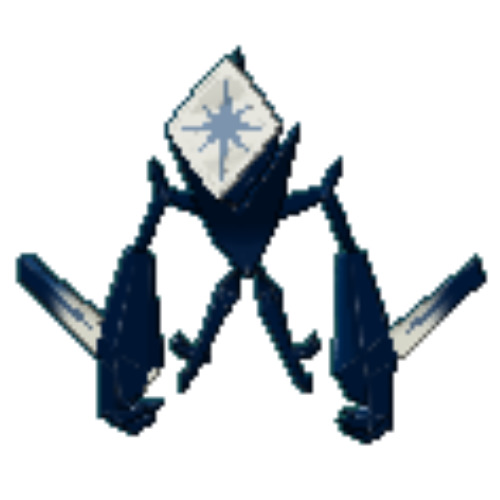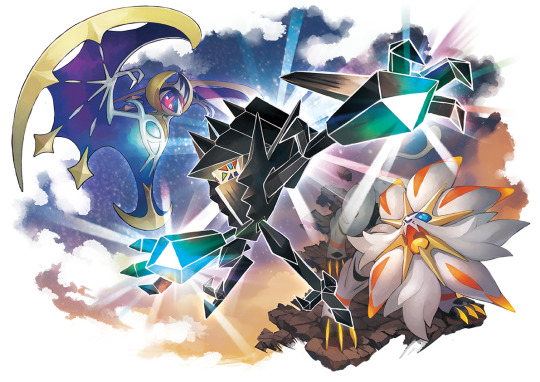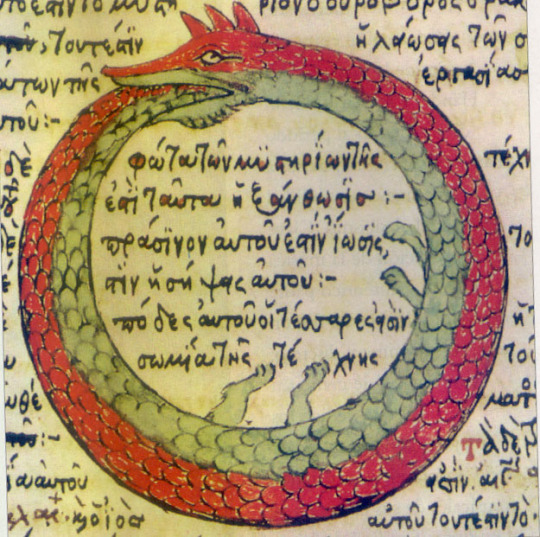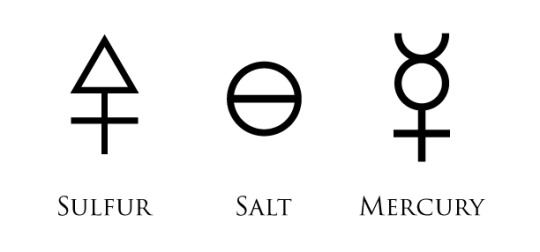#i haven't stayed up all night writing like this since i wrote the calamity fungus theory post
Text
Necrozma, Light, and Divinity: A Very Weird Sun and Moon Theory.
I don't think the alchemical connections in Sun and Moon were ever really discussed in-depth enough for my satisfaction. There's no god damn way they'd just base the starter's first forms off the 3 primes and name one of the factions the Aether Foundation just not go anywhere else with that. Sun and Moon were pretty wild games, and I think maybe we got distracted with all the other bells and whistles, like Lusamine's bullshit, the UBs, and ya boy Guzma. Buckle up.
Before we get onto the main bit, I wanna talk a little about Mesopotamian deities. Observe this boundary stone from 12th century BC.

It's Wikimedia Commons details are as follows: Kudurru (stele) of King Melishipak I (1186–1172 BC): the king presents his daughter to the goddess Nannaya. The crescent moon represents the god Sin, the sun the Shamash and the star the goddess Ishtar. Kassite period, taken to Susa in the 12th century BC as war booty.
We've seen this 8-pointed star before, right on Necrozma's back

The star, as the description says, represents Inanna (called that by the Sumerians, and Ishtar by the Babylonians). She is a deity of love, war, fertility, and divine justice. She is associated with the planet Venus (we'll talk about Venus more in a bit). Inanna is referred to as the "Queen of Heaven", described as powerful but capricious.
She is also described as having some ambiguity to her gender, even having the power to alter people's gender, especially in relation to her cult. This ties into another figure Necrozma may be based on, as well as it's alchemical ties. But before I talk about that I wanna walk about the time Inanna died.
Gods die all the time in mythology. Inanna is one of the few who came back. For a time, she was trapped in the underworld by her sister Ereshkigal. Similarly, it's Sun dex entry reads "Reminiscent of the Ultra Beasts, this life-form, apparently asleep underground, is thought to have come from another world in ancient times." Whole it's entry in Sword for gen 8 is "It survives by absorbing light. After a long time spent slumbering underground, impurities accumulated within it, causing its body to darken.". Inanna is eventually saved when "sexless" or androgynous beings are sent to rescue her.
Bulbapedia's trivia section for Necrozma offers a different idea: Lucifer.
Ultra Necrozma, a being of light, four wings, draconic yet angelic, who's battle music begins with a fucking organ absolutely invokes imagery of Lucifer.

In this form, its head becomes the 8-pointed star.
Lucifer, who's name means "light bringer". Lucifer the morning star, associated with Venus. This figure is eventually absorbed into Christianity as a name for the devil, a being who himself was once an angel. It's not uncommon for media to depict him with a mixture of secondary sexual characteristics, though most are male. It's entirely possible this is because of confusion between Satan and the figure Baphomet, though I had a harder time finding info on this one. If that were the case I wouldn't entirely fault Gamefreak for it. Even I have a hard time separating the two. Also probably worth noticing that dragons come up several times in the Bible, usually in relation to Satan. Ultra Necrozma does gain the dragon type after all.
Two figures, sometimes of ambiguous gender, both associated with the 3rd brightest object in the sky? Interesting. Very interesting.
If you're still reading, congrats, we're talking about alchemy now.
It was pretty hard to understand where they were going with this until we got USUM. USUM introduced Team Rainbow Rocket, Giovanni's attempt to gather past evil the leaders into a league of supervillains (who you demolish). Seemed simple enough. Haha, Necrozma is a light god. Z-Crystals are shards of its light because it's a prism. Cool.
But maybe not the whole story. I introduce to you: The Prima Materia.
In alchemy, Prima Materia is a substance that acts as the base form of all matter. It is similar to aether. a book called the Theatrum Chemicum contains the following passage about it.
"They have compared the "prima materia" to everything, to male and female, to the [redacted]*, to heaven and earth, to body and spirit, chaos, microcosm, and the confused mass; it contains in itself all colors and potentially all metals; there is nothing more wonderful in the world, for it begets itself, conceives itself, and gives birth to itself.
*the word used here is considered a slur against intersex people, so I excluded it
Furthermore, the Lexicon Alchemaie (which i would have checked more in depth but I don't speak Latin), lists names alchemists have used for the Prima Materia. Ones that stand out to me are: heaven, the dragon, heart of the sun, spittle of the moon, Venus, the rainbow. The Prima Materia is required in the creation of the Philosopher's Stone.
In USUM, instead of Nihilego, Lusamine beings forth Necrozma. The Aether Foundation's name comes full circle here. Aether as an alchemical element is frequently associated with light and gravity.
What I'm saying is, Necrozma isn't just light. it's alchemical light. it is the Prima Materia. The energy it emits becomes other things (in this case, the Pokemon types).
Now let's take this a step further, with Type: Null and Silvally. They don't directly relate to Necrozma, but I do believe they have an alchemical inspiration that ties them to Necrozma's mythological position in comparison to Arceus.

According to Bulbapedia, Type: Null was created using cells from all known pokemon types. It was supposed to be able to change types with RKS system, inspired by tales of Arceus. There were complications with them going berserk and the project was deemed a failure.
Type: Null is a failed Philosopher's Stone, until the power of love completed it.
With high friendship, Type: Null evolves into Silvally. It breaks free of the limiter attached to its head and regains use of the RKS system, this time without going berserk. Gladion, a kid, achieves what a bunch of detached adult scientists could not.
It seems love and light are very similar concepts, at least in the Pokemon world. The fairy types are heavily associated with light, super effective against dark types, and a certain pokemon repping them when they first got revealed evolves when it loves you (and has a fairy type move).

Now, it's still difficult to say where Necrozma stands in Pokemon's mythology. It's from another world entirely. The question is whether or not Arceus has influence in those worlds. It's God. It should, right? I think there's a few possibilities, but I don't have enough information to decide for sure
-Necrozma is equivalent to Arceus in its own world. Ultra Beasts may not be described as pokemon, but they have types and use moves like them, so they must be something similar but adapted to a different environment. This one's a bit of a stretch.
-Necrozma is a creation of Arceus like everything else and plays an important function, it just made a home in a different area of time and space, or much like Giratina (another Satan inspired pokemon who is dragon type) it was sent there for some reason.
-Less likely, Necrozma is above Arceus, not as a god but a primal energy gained beast-like sentience, the divine Chaos from which Arceus came
One potential hint at this relation may lie in Arceus' name. It's likely this is a coincidence, and they didn't intend this from the get-go, but it did just happen to fit the alchemy theme. There is another concept: Archeus. Archeus is, according to Wiktionary: "The vital principle or force believed by the Paracelsians to be responsible for alchemical reactions within living bodies, and hence for the growth and continuation of life." It is another name for Anima Mundi, the soul of the world. The divine spark. Archeus has four aspects: Life, Light, Chemical, and Reflective.
I haven't worked out yet what this means, unfortunately. I could be connecting a bunch of weird mythological coincidences. But it was very fun. I would like to discuss some less grand alchemical connections in Alola sometime. Those would require a bit more research and milling over however. I genuinely wish I could give you a more satisfying conclusion here.
Altogether, I hope this gives you food for thought.
UPDATE: more thoughts
there's something I wanted to talk about that I forgot when previously writing this, and I've had more time to mull over previous thoughts.
This next section will start with the elements of gender ambiguity with Inanna and Lucifer, and how that connects to alchemy. Rebis.
An end product of the Magnum Opus (creation of the Philosopher's Stone), the Rebis is a fusion of spirit and matter, imbued with male and female qualities. (Lot of the use of that word I omitted earlier here so be advised if you look into it more). While lacking in the two heads, that certainly lines up with the element of gender ambiguity. Ultra Necrozma is the being at its strongest, when it is full of the much needed light its body had been starving for.

Another interesting bit regarding the Rebis is it is considered the result of "reconciliation of opposites", and imagery around it is called a chemical wedding. This is symbolized by the coming together of a king and queen, the king in red and the queen in white, each symbolizing the sun and moon respectively.
While Solgaleo and Lunala do not fit so neatly into the references to mesopotamian myth (Shamash and Sin are both male, Shamash is Ishtar's brother and Sin their father), this might add some ideas for how Solgaleo and Lunala connect to Necrozma. They are all beings of light after all, and Necrozma is able to siphon it from them when fusing with them in USUM.
I believe Necrozma may be a possible evolution of Cosmog. Bear with me, please.
Obviously, this isn't reflected in gameplay. What Cosmog evolves into depends on your version of the game. But Solgaleo and Lunala are framed as mates. You can get a second Cosmog in both games, and when you do, the other game's legendary appears. They are also referred as appearing to be male and female respectively in their Pokedex entries despite having no gender in the actual game data.
But what is Cosmog and Cosmoem in this case then? Well besides being based on nebulas, I think it may be another concept called filius philosophorum, "Philosopher's Child". One of the Filius' ways of being represented is by the Rebis, as well as a direct child of the red king and white queen. Many sites mention an egg as a symbol but don't elaborate further (like baby name websites they often feed off each other indefinitely).
Now Cosmog's name is the same in all languages, but Cosmoem's is not. It's Japanese name is Cosmovum. Cosmos and ovum. Ovum as in egg. The -em in Cosmoem's name may also be for embryo. whoever wrote the trivia section for it's Bulbapedia stage thinks it has elements of both the sun and moon in its design, and I'm inclined to agree. It also mentions something called the world egg.
The world egg is a mythological concept that spans across multiple cosmologies, but because alchemy often takes from the Greek cosmology I'll stick to that. Within Greek myth we are given the Orphic Egg, from which the primordial deity Phanes is born. Phanes' name meaning "to light, or to shine". He is described bearing a helmet and golden wings, largely referred to as male but sometimes as androgynous. His parentage varies, with having no parents at all, to Chronos (time), to Chaos, to Nyx (night). He is described as creating all other gods, or creating the day depending on the telling.
Necrozma is also Phanes, a being of light, born from a divine egg. Necrozma is a more perfect path of evolution than it's parents, but this is likely triggered by something far beyond the control of the player.
(Addendum: If you think this also sounds similar to books about Arceus in the Canalave library, you'd be right. That myth was applied to Arceus first, which makes some interesting implications.)
Now you may be thinking "wow a lot of these concepts sound like ways to talk about the Philosopher's Stone", and you'd probably be right. The Magnum Opus had many names and many ways of representing it visually, mostly alchemists wanted to keep their trade secrets. But there is an interesting one.
The ouroboros. A symbol of unity, eternity, and endless cycles. The beginning and the end are intrinsically connected.

What is Necrozma doing when you meet it in USUM? it's desperately looking for light. It can't make it on its own anymore. It's base form dex entries describe it as craving light, going dormant when it can't find it.
Ultra Sun: It looks somehow pained as it rages around in search of light, which serves as its energy. It's apparently from another world.
Ultra Moon: Light is the source of its energy. If it isn't devouring light, impurities build up in it and on it, and Necrozma darkens and stops moving.
Necrozma is burning out like an old star. Necros, death.
The Philosopher's Stone is often visualized in modern media as a gem, much like it's body in this form. When the power is expended, Necrozma will be just another rock. It is a transient being. Much like the Great Work, perfection is not sustainable in practice.
But it's not all bad. Phanes, again, is also described as creating other gods. In time, it's body will break down and may become a new Cosmog. The end begets the beginning. The Prima Materia is after all, important in the Great Work's culmination.
There is another being described as creating all else though, in Pokemon. Once again it rolls back around to Arceus.
In Platinum and HGSS Pokedex entries, Arceus' goes as follows: It is said to have emerged from an egg in a place where there was nothing, then shaped the world.
These beings are connected somehow, but after more research from my first version of this I've come to the conclusion that while Necrozma and Arceus are similar (remember, Arceus can be any type, Necrozma's light becomes the differently typed Z-Crystals), Necrozma is inherently more flawed and impermanent.
It's important also to remember that the Philosopher's Stone is the work of humans. It's not divine but comes from a desire to come close to it. I can't say the same about Solgaleo and Lunala, but it's possible that Necrozma isn't natural. Necrozma was made. By whom? Who knows, but probably someone from the Ultra Recon Squad's dimension. This is merely a guess. It could just be a natural but rare occurrence. From what we've been given, this anyone's guess. Maybe were not even meant to know. Whatever the case, Necrozma is a transient being, Arceus-like but ultimately imperfect. The cycle continues eternally.
BONUS ROUND: tria prima
In the very introduction of this post I mentioned the 3 primes, and the starters's first forms having similarities to their symbols. I'm aware there are likely many alchemical connections in the story that I haven't noticed yet but I wanted to discuss something more with that.

Paracelsus described the primes (sulphur, mercury, and salt) as materials from which all things are made. This is not entirely literal. Alchemy wasn't just chemistry, it was spiritual. Each prime has a different quality.
Sulphur is combustibility, soul, the divine spark
Mercury is volatility, spirit (mind), consciousness
Salt is neither, it is the body that holds them
One of the biggest examples for this is that in say, burning a piece of wood. The fire was sulphur, the smoke was mercury, and the ash was salt.
The tria prima sound a lot like prima materia don't they? It's kind of poetic the way this is implemented in USUM. You begin your journey with a prime material and it's biggest climax is with another prime material. Just as the end begets the beginning, the beginning begets the end.
~
Note for potential future update: Two substances were added to this later on: phlegm and caput mortuum (Latin for "dead head"). Caput Mortuum was waste product in a reaction. Phlegm, in the alchemical sense is "A watery distillation, especially one obtained from plant matter; an aqueous solution.", to quote Wiktionary. Phlegm was also considered a waste product. CM was produced by sublimation, and Phlegm by distillation. Phlegm doesn't appear to have a symbol but CM does: a skull.
#pokemon#gen 7#alola#necrozma#sun and moon#sumo#usum#arceus#type: null#silvally#alchemy#theory#i haven't stayed up all night writing like this since i wrote the calamity fungus theory post#mythology#cosmology#thought vomit journal
46 notes
·
View notes